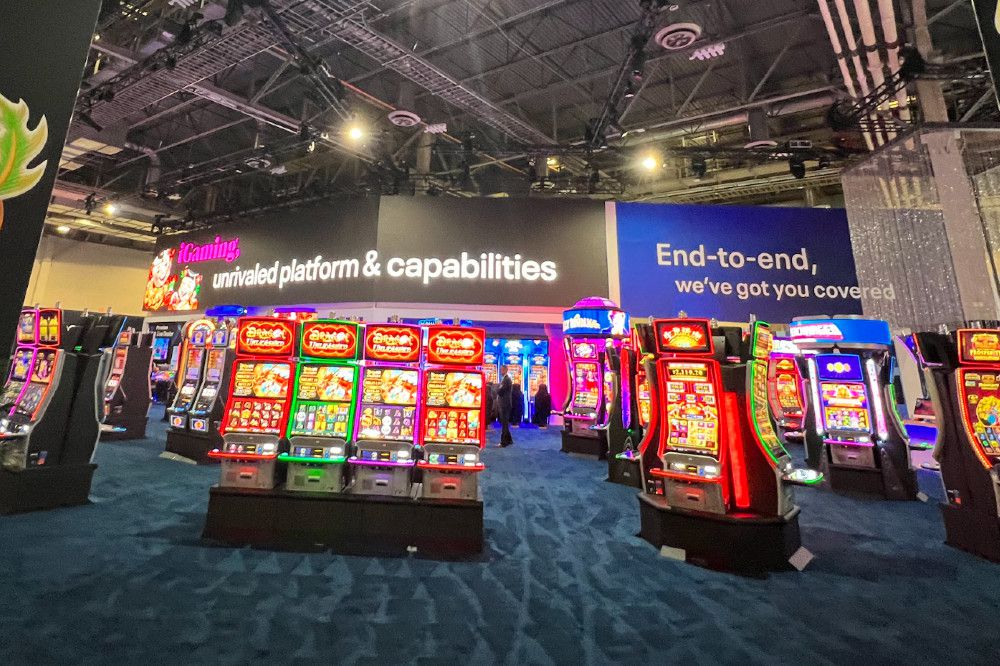Accessibility In Gaming: Feeling The Pinch Of Industry Cuts

Table of Contents
The Shrinking Budget for Accessibility Features
Budget constraints directly affect the inclusion of accessibility features in game development. The pressure to deliver a polished product within a tight timeframe often means that less crucial features – including those vital for accessibility – are cut. This is a troubling trend with far-reaching consequences.
- Reduced development time allocated for accessibility features: Accessibility isn't always prioritized, leaving little time for development and thorough testing of features like customizable controls, alternative input methods, and subtitles.
- Fewer accessibility specialists employed by game studios: The lack of dedicated accessibility experts means fewer skilled individuals are available to advise on design and implementation, leading to potentially flawed or incomplete accessibility features.
- Prioritization of core gameplay over accessibility features during crunch time: When deadlines loom, accessibility features are often the first to be sacrificed, even if they are crucial for inclusive gameplay.
- Examples of games where budget cuts have noticeably impacted accessibility: While specific examples are difficult to cite definitively without internal studio information, many gamers have observed a decrease in robust accessibility options in recent years compared to prior titles. This is often reflected in limited customization options or a lack of features for players with specific needs.
The cost-benefit analysis often used to justify cutting accessibility features is deeply flawed. While implementing accessibility may seem expensive upfront, the potential to reach a vastly larger and more diverse audience is often underestimated. This short-sighted approach ignores the significant market opportunity presented by inclusive game design.
The Impact on Players with Disabilities
Reduced accessibility in gaming significantly impacts players with various disabilities, leading to exclusion and frustration.
- Exclusion of players with visual impairments: The lack of sufficient audio cues, robust screen reader compatibility, and well-designed visual settings prevents many visually impaired gamers from enjoying games.
- Challenges faced by players with motor impairments: Limited options for customizable controls, lack of alternative input methods (eye tracking, switch controls), and insufficient controller support creates significant barriers for players with motor impairments.
- Difficulties for players with cognitive impairments: Ambiguous instructions, complex interfaces, and a lack of adjustable difficulty levels make it challenging for players with cognitive impairments to engage with games.
- The emotional toll of exclusion from a beloved hobby: The inability to enjoy a beloved hobby due to accessibility limitations can be profoundly isolating and disheartening for many gamers.
Real-life examples abound of gamers expressing frustration over inaccessible games, feeling excluded from the gaming community and unable to share the same experiences as their peers. These voices highlight the urgent need for change.
The Role of Game Publishers and Developers
Game studios and publishers bear a significant responsibility in promoting accessibility. A shift in mentality and approach is crucial.
- The importance of incorporating accessibility considerations from the game design phase: Accessibility shouldn't be an afterthought; it needs to be integrated into the game design from the very beginning.
- Investing in accessibility testing and feedback from disability communities: Meaningful collaboration with disability communities during development is crucial to ensure that accessibility features are effective and meet the needs of diverse players.
- Implementing inclusive design principles: Universally designed games benefit all players, not just those with disabilities. This creates a more enjoyable and engaging experience for everyone.
- Discussing potential solutions like open-source accessibility toolkits and community-driven modifications: Open-source solutions can lower the barrier to entry for studios and foster community-driven innovation in accessibility features.
The ethical considerations of prioritizing profit over inclusion are undeniable. Games should be accessible to all, regardless of ability. Profit should not come at the expense of inclusivity.
The Growing Demand for Accessible Gaming
The demand for more accessible games is steadily growing. Consumers are increasingly vocal about their desire for inclusive gaming experiences. This presents a significant market opportunity that many developers are overlooking. Accessible games can significantly broaden the player base, ultimately increasing overall profitability and brand reputation. Successful examples of companies prioritizing accessibility demonstrate that inclusivity can be a winning strategy.
Potential Solutions and Future Outlook
Addressing the issue requires a multi-pronged approach involving increased funding, industry standards, and government regulations.
- Government incentives for accessible game development: Tax breaks or grants could incentivize studios to prioritize accessibility features.
- Collaboration between studios and accessibility experts: Partnerships with accessibility consultants and organizations can lead to better design and implementation of features.
- Increased awareness and advocacy within the gaming community: Raising awareness and demanding better accessibility from the gaming industry is crucial.
- The potential of new technologies to enhance accessibility: Emerging technologies like AI and adaptive controllers offer exciting possibilities for improving accessibility in the future.
The future of accessible gaming is hopeful. With increased awareness, collaboration, and a shift in industry priorities, we can create a gaming world where everyone feels included and can enjoy the magic of play.
Conclusion
Budget cuts are negatively affecting accessibility in gaming, significantly impacting players with disabilities. The industry needs to prioritize accessibility for both ethical and economic reasons. The potential for increased market share and a more diverse and engaged player base is immense.
Let's advocate for better accessibility in gaming! Demand more inclusive game design, support developers prioritizing accessibility, and encourage industry-wide change to ensure everyone can enjoy the world of gaming. Let's make accessible gaming a reality by raising awareness and demanding better from the industry. Use your voice to promote accessible gaming and support developers who are creating more inclusive experiences.

Featured Posts
-
 Jordan Bardella Leading The French Election Opposition
May 24, 2025
Jordan Bardella Leading The French Election Opposition
May 24, 2025 -
 Elena Rybakina Nedavnie Rezultaty I Plany Na Trenirovki
May 24, 2025
Elena Rybakina Nedavnie Rezultaty I Plany Na Trenirovki
May 24, 2025 -
 Ferrari 296 Speciale Experiencia De Conducao Com Motor Hibrido De 880 Cv
May 24, 2025
Ferrari 296 Speciale Experiencia De Conducao Com Motor Hibrido De 880 Cv
May 24, 2025 -
 Navigating The Complexities Of The Chinese Auto Market Case Studies Of Bmw And Porsche
May 24, 2025
Navigating The Complexities Of The Chinese Auto Market Case Studies Of Bmw And Porsche
May 24, 2025 -
 Analisi Dei Prezzi Moda Negli Stati Uniti Dazi E Costi
May 24, 2025
Analisi Dei Prezzi Moda Negli Stati Uniti Dazi E Costi
May 24, 2025
Latest Posts
-
 Tulsa King Season 2 Blu Ray Exclusive First Look At Sylvester Stallone
May 24, 2025
Tulsa King Season 2 Blu Ray Exclusive First Look At Sylvester Stallone
May 24, 2025 -
 Dc Legends Of Tomorrow A Deep Dive Into Gameplay Mechanics
May 24, 2025
Dc Legends Of Tomorrow A Deep Dive Into Gameplay Mechanics
May 24, 2025 -
 Sylvester Stallone Returns In Tulsa King Season 2 A Blu Ray Sneak Peek
May 24, 2025
Sylvester Stallone Returns In Tulsa King Season 2 A Blu Ray Sneak Peek
May 24, 2025 -
 Fort Worth Stockyards Jonas Brothers Joe Jonas Stuns With Surprise Concert
May 24, 2025
Fort Worth Stockyards Jonas Brothers Joe Jonas Stuns With Surprise Concert
May 24, 2025 -
 2025 Memorial Day Sales Expert Recommendations For The Best Deals
May 24, 2025
2025 Memorial Day Sales Expert Recommendations For The Best Deals
May 24, 2025
